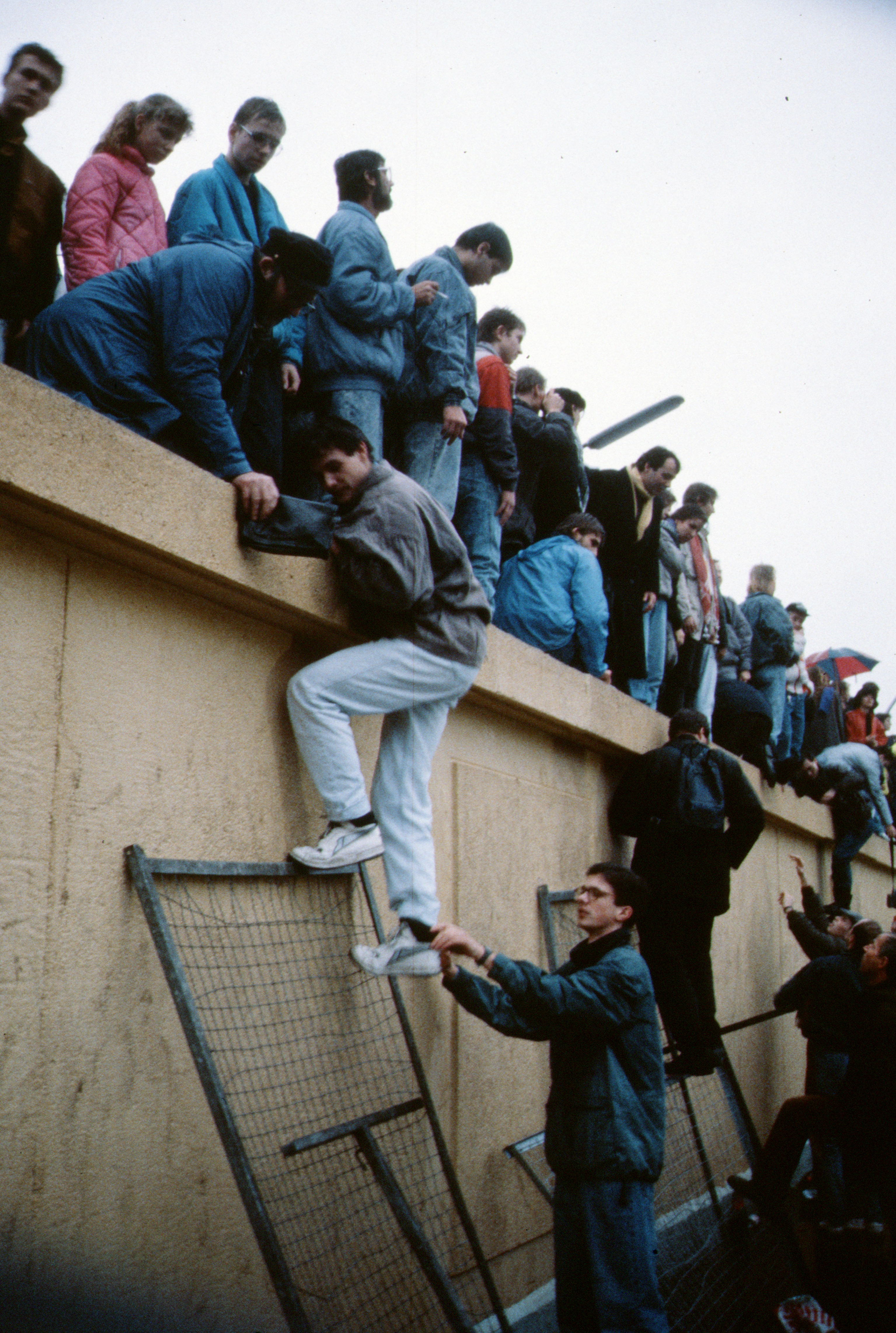After the Second World War, as a result of the policy adopted by the Great Powers, Germany was divided into two states.
The western part was occupied by the Allies, while the eastern part found itself under the influence of the Soviet Union. Berlin, as the capital city of the Third Reich, was also eventually divided into the various spheres of influence of the victorious states.
The authorities of East Germany, failing to deal adequately with the wave of migration heading for the western part of the country, decided to curtail this unwelcome phenomenon by building a wall. It is estimated that in the period 1949–1961 around 2.6 million people left East Germany. In 1961 the authorities of East Germany began to implement a carefully guarded plan to build a wall. Later this wall came to function as a symbol of a divided Europe.
After many years of separation, 1989 finally saw the opportunity to overthrow the previous order and restore a normal state. In the summer of 1989 huge numbers of East German citizens began to seek refuge in West German embassies throughout the Eastern Bloc, with the intention of obtaining permits to travel to the western part of their divided country. This upheaval of the population and the general international atmosphere brought changes to the authorities of East Germany, beginning when Honecker lost power in November. Egon Krenz became the leader of the state; however, despite the intention to mitigate the situation, the country was hit by a wave of protests and he failed to weaken the impact of the events. On 4 November, at Alexanderplatz in Berlin, a manifestation initiated by the Berliner Ensemble group was joined by half a million people. They demanded freedom of choice and opinion, depriving the Socialist Unity Party of its leading position, dismissal of the Government, and permission for opposition activities.
On 6 November the mass escapes hit the news, which became possible because on 1 November East Germany allowed non-visa travel to Czechoslovakia, and on 3 November it agreed to open the border between Czechoslovakia and West Germany for East German citizens. On the weekend of 3 to 5 November over 10 thousand East German citizens, using various methods, travelled through Czechoslovakia to West Germany. The news spread through the media like wildfire: everyone was talking about “the symbolic fall of the Wall.”
While the events of 3 November were unprecedented, what was about to happen six days later would made 9 November a breakthrough point in the history of the world. The opening of the border between East Germany and Czechoslovakia, and later between Czechoslovakia and West Germany, was a road of no return. The border between East and West Germany was not meant to last much longer.
On 6 November the Council of Ministers published a draft act on travel abroad for a period of thirty days a year. However, the procedure for issuing the travel permit was so lengthy that it instigated a wave of protests. On the following day the Law Committee of the People’s Chamber turned down the draft and demanded the visa obligation be abolished for business and private trips.
On 7 November Stoph’s Government resigned, and a meeting of the Central Committee was summoned. During the meeting various topics were discussed, but on 9 November Egon Kranz put an end to the pointless discussions and insisted on addressing the issue of departures. Willi Stoph, as the current Chairman of the Council of Ministers, suggested that a provisional regulation should be immediately introduced concerning travel and permanent departures abroad from East Germany. Applications could be submitted without stating a specific reason for the departure.
A press release was planned for 10 November, yet on the same day Schabowski, who was in charge of the media and absent from the conference and hence not familiar with the exact arrangements, began to read long passages from the regulation during a press conference. In response to questions regarding the document, he stated that the regulation came into force immediately. He replied to the question whether this also concerned Berlin using a quotation from the document, “Permanent departures can take place at all border crossing in East and West Germany.”
After the conference, press agencies reported Schabowski’s statement regarding the opening of the borders.
None of the leaders of the Socialist Unity Party managed to foresee what was about to take place on the night of 9-10 November in Berlin. East Berliners arrived at the border crossings in numbers far higher than expected by the border army.
Initially some attempts were made to stop the crowds, but at 9 p.m. the Chief Department of the 4th Ministry of National Security ordered the stamping of identity cards of those people going to West Berlin. While this meant that they would be deprived of their citizenship, this did not seem to matter anymore. Finally the stamping was abandoned and thousands of people crossed the border of the divided city without any control. People around the country began to enthuse about this freedom regained after decades of oppression.
by Aleksandra Krzemień
This article was prepared in cooperation with Historykon.pl.
